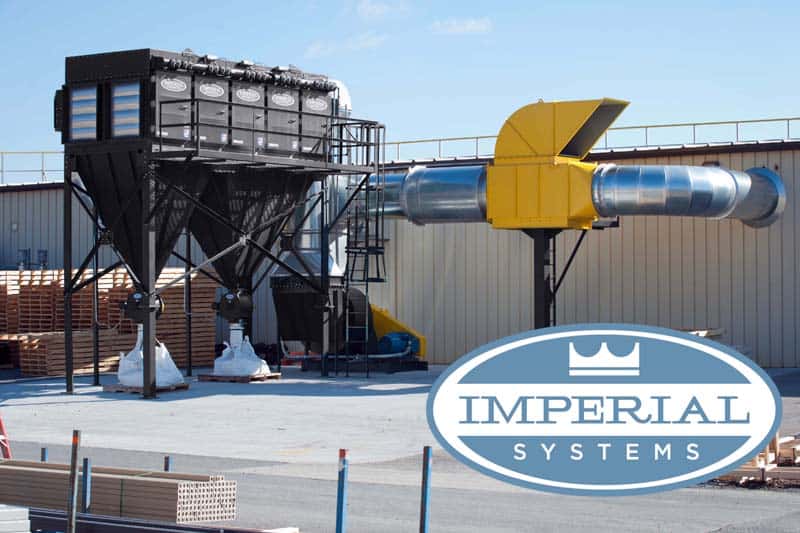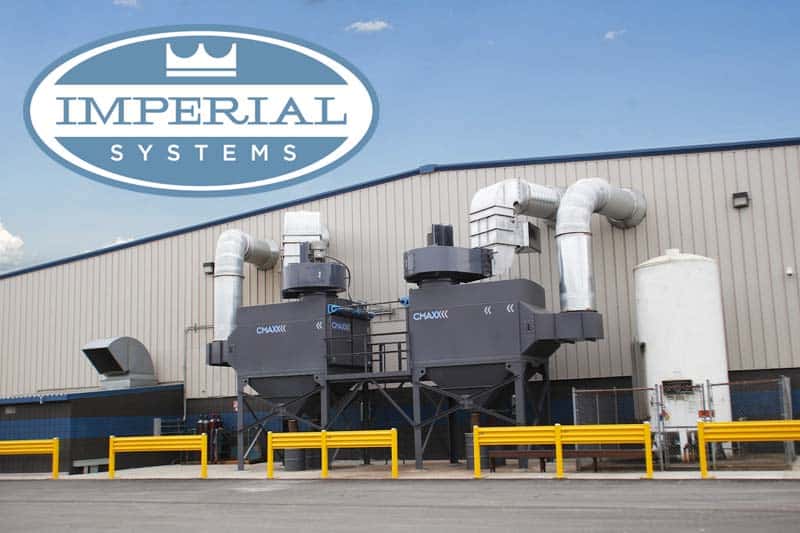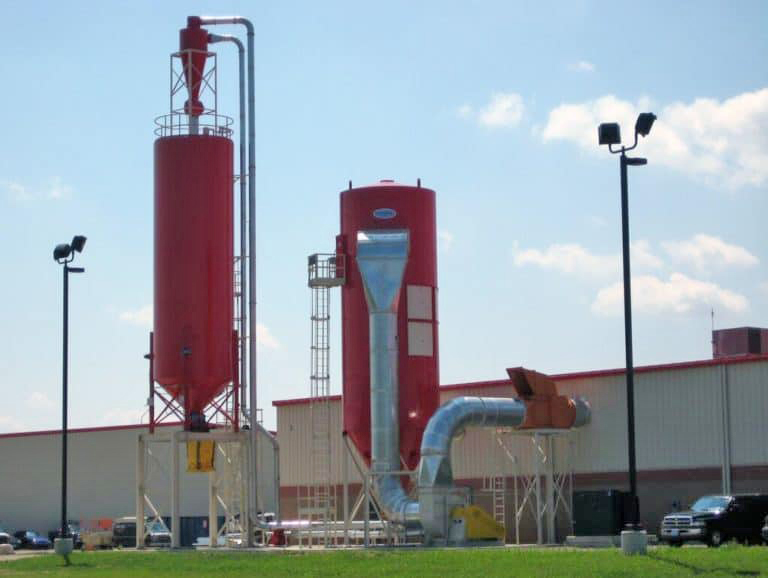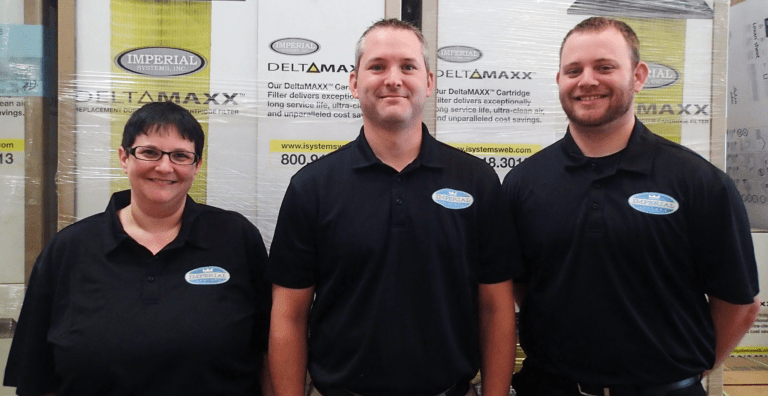
by Imperial Systems | Oct 17, 2016 | Uncategorized
As of 2016, the Department of Justice (DOJ) and the Department of Labor (which includes OSHA) partnered to bring federal charges against companies who expose workers to dangerous materials and carcinogens. Hazardous fume and dust exposure in the workplace is indeed a serious offense.

Environmental Protection Laws Facilitate Prosecution
This partnership is to enable prosecutors to use powerful environmental protection laws. With these laws, they can prosecute companies for worker safety violations involving exposure to dangerous substances. This will allow prosecutors working on OSHA worker exposure cases to work with the Environmental Crimes Section of the DOJ to maximize penalties and criminal charges.
In many cases, environmental protection laws are stricter and have stronger punishments than OSHA regulations. Environmental protection has wide public support and considerably more funding than occupational health and safety. There is an entire division of the DOJ that handles environmental crimes. More effectively, these crimes may carry a much heavier fine or more serious criminal charges.
OSHA’s ability to level criminal charges is usually limited to certain situations. This is where an employer willfully and knowingly violates safety standards which cause the death of a worker. These cases can be difficult to prove and even more difficult to prosecute. Under laws regulating environmental crimes, releasing or failing to control any workplace hazard exposure to dangerous substances is a crime. This applies even if the exposure does not result in death or serious injury.
Just like with OSHA fines, the most serious criminal charges will go to employers who repeatedly violate the rules or who fail to correct problems even when they know about them. Bringing in the DOJ and their regulation of environmental laws is likely to affect companies who aren’t following the rules for controlling or cleaning up their hazardous materials.
Identifying Hazardous Fume and Dust in the Workplace
Workplace hazard exposure includes materials such as fumes and dust from many types of industrial processes. Some examples are welding, plasma or laser cutting, manufacturing of plastics and resins, printing inks and pigments, as well as production of chemicals or fertilizers.
OSHA usually sets exposure limits for employees. Environmental regulations set limits for material release into the environment, regardless of the exposure to individual employees. Under the DOJ, environmental laws can handle hazardous material release amounts inside a facility.
For metalworking facilities, hexavalent chromium, manganese, and other components of cutting and welding fumes are heavily regulated as environmental toxins. Exposing people to these materials, inside or outside, can be an environmental crime. Hexavalent chromium often contaminates drinking water, and it’s a major environmental concern.
For companies that use or produce hazardous dust or fumes, a dust collection system is very important for limiting exposure. The system will not only keep the materials away from workers but also collects them safely and allows you to dispose of them properly. A dust and fume collection system that’s maintained and used correctly is a necessary tool for controlling hazardous airborne particles or fumes. Contact us for more information.
References:
www.justice.gov
www.justive.gov
www.justice.gov
Read more

by Imperial Systems | Jul 13, 2016 | Uncategorized
People often use baghouses and dust collectors as synonyms. What is a baghouse? It is a system in which bags made of various materials filter the air. The system periodically cleans the bags to remove accumulated dust.
Today, cartridge dust collectors are increasingly popular in many industries, and for good reason. Cartridge filters can pack a lot of surface area into a small space. They can also filter very small (sub-micron) particulate very efficiently. For some industries, this is essential. This includes metalworking, which generates smoke and fumes that contain potentially toxic materials.
The baghouse, however, has been a workhorse for industrial dust control for many years and continues to serve its role today. While the basic concept remains the same, today they are more adaptable than ever. This is due to new filter materials and new ways to solve problems. Not every industry produces dust that’s fine enough to need the high efficiency of a cartridge collector. The baghouse efficiency is sufficient in plenty of cases.
 Types of Baghouses
Types of Baghouses
So how does a baghouse dust collector work? Generally, all baghouses have a tube sheet to which the bags attach. They also have an inlet for dirty air and an outlet for clean air. Then there’s an opening at the bottom for collected dust to drop out. The location of these features depends on the type of baghouse. The main differences between types of baghouses are how they clean the bags.
Shaker Baghouses
A shaker baghouse cleans the bags by mechanically shaking them. The bags usually hang from the top of the unit and attach to the tube sheet at the bottom. In this type of system, air typically enters from the bottom. The system pulls the air through to collect dust on the inside of the bags. Clean air then exits at the top while collected dust remains inside the bags.
To clean the bags, the airflow must first be shut off. Then the hanging mechanism shakes the bags to get rid of the dust, which drops out the bottom. These are not the most efficient types of baghouses and can be high-maintenance. Yes, the design is simple and does not require compressed air or complicated supports for the bags. However, damage to the bags can occur from the mechanical shaking mechanism.
Reverse Air Baghouses
In a reverse air filter bag house like our BRF, dirty air enters the collector and dust collects on the outside of the bags, which are supported by a metal cage to keep the air pressure from collapsing them. Steady air circulation continuously pulls air through the filter bags. For cleaning, a fan rotates over the bags, blowing reverse air into them to remove dust.
This type of reverse air baghouse generates a lower pressure than the compressed air pulses of a pulse jet. This decreases wear and tear on the bags and saves on the cost of compressed air. They are usually very cost-efficient and when using within the design parameters, they are also very effective. Also, this type of reverse air baghouse can continue running while cleaning occurs.
An older type of baghouse, also sometimes referred to as reverse air, collects dust on the inside of the bags. Then it cuts off the inflow of dirty air and uses a reverse flow of clean air. This partially collapses the bags, which also removes the dust. These types of bags have rigid rings that allow them to flex but not collapse completely, or “pancake”.
These types of reverse air baghouses have to be taken offline for cleaning. But sometimes they are divided into compartments so one section at a time can be cleaned. So, you can see that the reverse air baghouse working principle can vary from brand to brand.
Pulse Jet Baghouses
A pulse jet baghouse design is somewhat similar. Metal cages support the bags and hang from a tube sheet at the top of the baghouse. Dust and air enter and dust collects on the outside surface of the bags, not the inside. Bursts or pulses of compressed air clean the bags. These travel down the length of the bag and dislodge the dust.
Because the pulse of air travels very quickly down the bags, the baghouse is cleaned without taking it offline. This allows them to operate more efficiently since the system removes dust from the bags at more regular intervals. The downside to the pulse jet bag filter design is the higher pressure and expense of compressed air. These both add to operating costs.
Operation and Maintenance Costs
The EPA provides information (link: https://www3.epa.gov/ttncatc1/dir1/cs6ch1.pdf) to help you make a general calculation of the capital costs of a baghouse dust control system. Their calculations include the cost of the collector, the bags (and cages if necessary), measurement instruments, installation costs, and the annual operating costs (electricity, compressed air, labor, and materials).
These costs will obviously vary widely. A pulse jet baghouse requires compressed air, which other types of baghouses do not need. But it may require fewer filters since they are more efficient.
Filter Replacement
One thing that is a major headache for owners of any type of baghouse: replacing the bags. This is usually a dirty, messy, and time-consuming job. It also requires the collector to be offline for a considerable period of time. It often involves working in an enclosed space. Mechanisms for attaching the bags to the tube sheets vary widely. It can be a very involved process, especially when using cages. Some companies installing new dust control equipment choose a cartridge filter collector. This is because vertical collectors like our CMAXX™ are easy to change and do not involve issues with confined spaces.
For existing baghouses that need frequent bag changes, a pleated filter bag is an option that should be considered. These have a much larger surface area and last much longer than traditional bags, which means less frequent changes. Also, pleated filter bags do not require cages, which greatly simplifies the changing process.
Conclusion
Yes, there’s a lot to know about baghouses! Call us today at 800-918-3013. Our helpful, knowledgeable team members can answer any questions you may have about them. Our goal is to provide the right dust collection solution for your application. Learn more about Imperial Systems’ baghouses.
Read more

by Imperial Systems | Jun 1, 2016 | Uncategorized
We hear it every day from customers. Aftermarket customer service from other companies that sell replacement filters is not always a pleasant experience. These customers come to us because they’re tired of automated phone menu systems, messages that never get returned, and questions that never get answered. If you’re ready for a better filter purchasing experience, Imperial Systems is the logical choice.
“Your customer doesn’t care how much you know until they know how much you care”. – Damon Richards
This could not be more true of our philosophy. While you know that Imperial Systems custom-designs and manufactures the best dust collectors in the industry, you should also know that we have a dedicated aftermarket team ready to assist you. Whether you need spark traps, replacement airlock parts, or new DeltaMAXXTM filters, our team will be with you all the way. From finding the right part to making sure you’re satisfied with your order.
When you work with Imperial Systems, you’re not just a number, you are a priority! One of our aftermarket customer service professionals will manage your account, and will make sure you always receive a prompt, personal, and helpful response to all of your needs. You’ll always know exactly who to call. You won’t have to explain what you need every time you call us because we already know who you are!
Here are a just a few of our aftermarket professionals committed to providing you with the best service in the industry.

Rebecca, Justin, and Patrick
When you call us for your filters or other aftermarket needs, one of us will be there, in person, ready to return your calls, answer your questions, and solve your problems with the kind of personal attention your business deserves. You treat your customers like they matter. Come and work with the aftermarket sales team who treats you like YOU matter. Call today at 800-918-3013!
Read more



 Types of Baghouses
Types of Baghouses